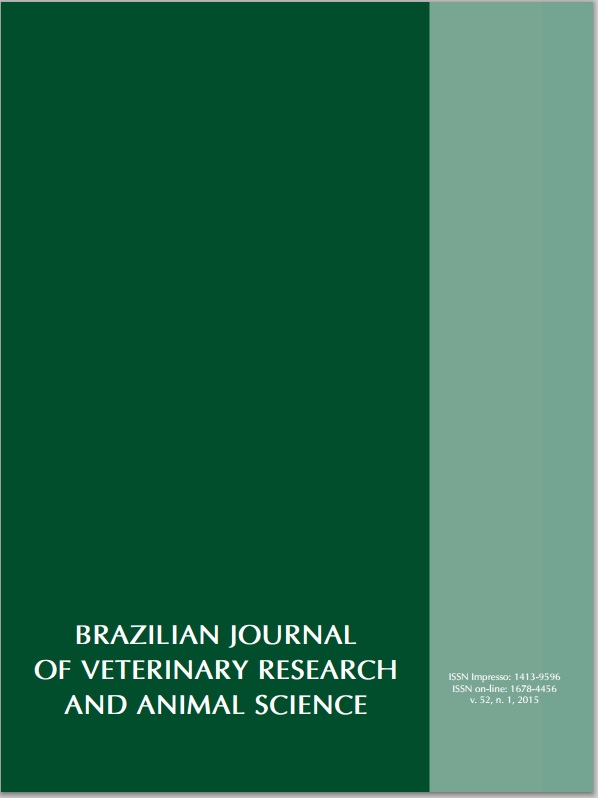Topography of arterial and venous blood vessels in the kidneys of English Thoroughbred Horses
DOI:
https://doi.org/10.11606/issn.1678-4456.v52i1p6-14Keywords:
Equine, English Thoroughbred, Kidneys, Renal artery, Renal veinAbstract
In equines, kidney diseases are typically associated with respiratory and digestive problems, but surgical intervention is not common. The study of kidney blood vessels of domestic and wild animals are of fundamental importance for understanding many aspects of their physiology and nutrition. The current study used 30 pairs of kidneys from English Thoroughbred horses being 15 males and 15 females of different ages. The organs were donated by the Jockey Club of Sao Paulo. During the animal necropsies, the kidneys and their arteries and veins were removed together. The organs were fixed in formalin 10% for about 48 hours, for dissection and individualization of the components of the renal pedicle. After dissecting the material, the components of the renal pedicle were individualised. To analyse the results, the cranioventral, craniodorsal, caudoventral and caudodorsal quadrants were defined using two lines: craniocaudal and dorsoventral. Overall, the following results were obtained: in the hilar region, two arterial branches occurred in the right kidney in 50% of cases and two in the left kidney (33.3%); in the juxtahilar region, the number of arterial branches ranged from four to five in the right kidney in 20% of cases, whereas six occurred in the left kidney (16.7%); and regarding the extrahilar region, three branches occurred in the right kidney (26.7%) and three in the left kidney (20.0%).
Downloads
Downloads
Published
Issue
Section
License
The journal content is authorized under the Creative Commons BY-NC-SA license (summary of the license: https://





